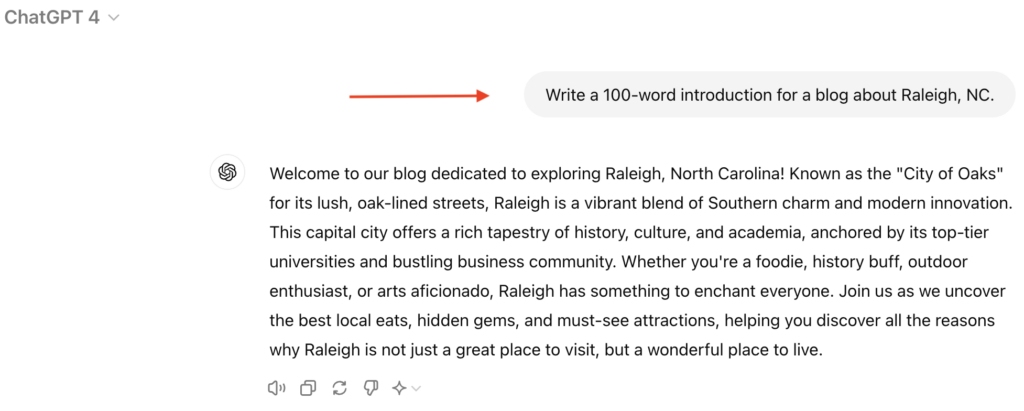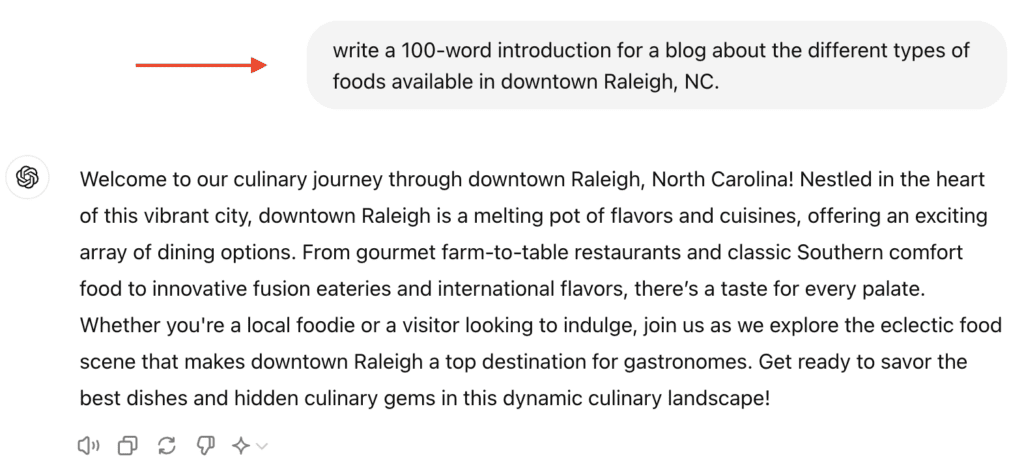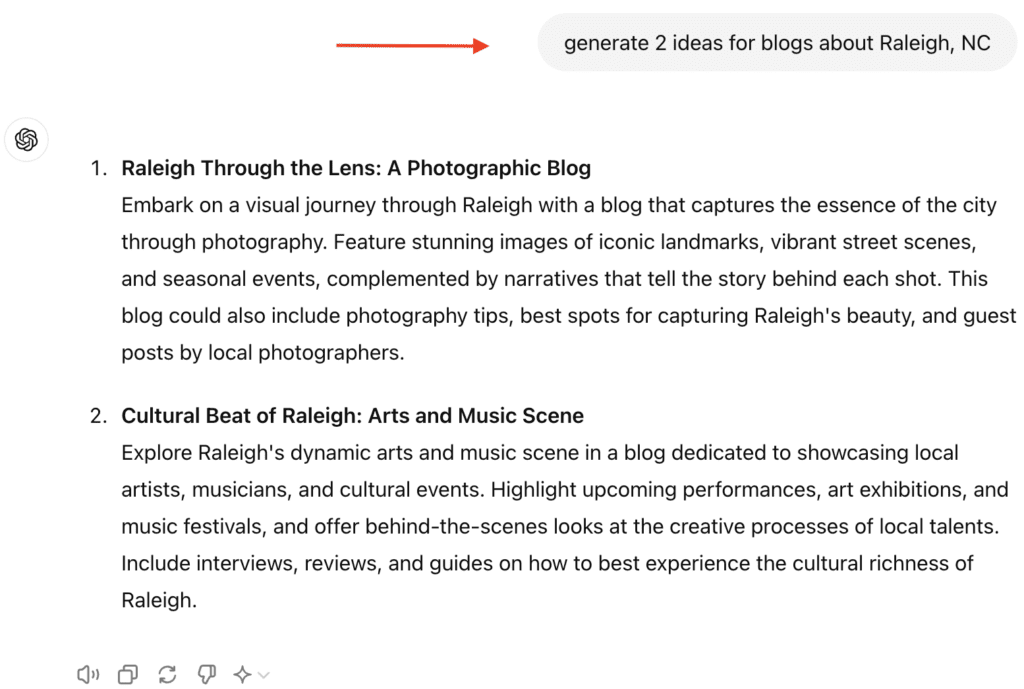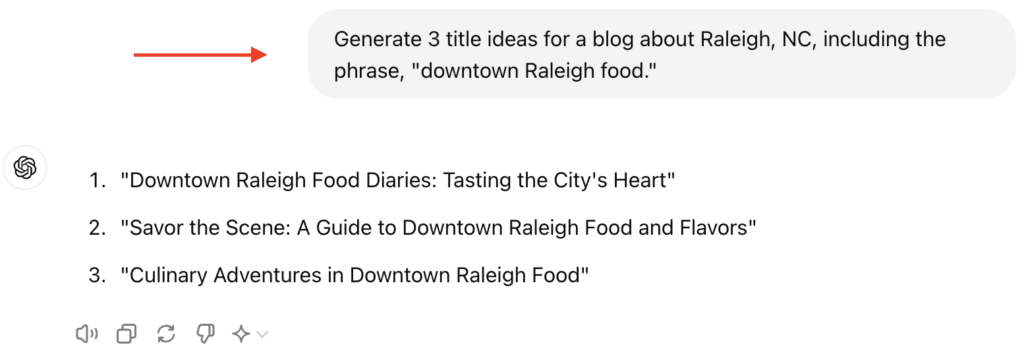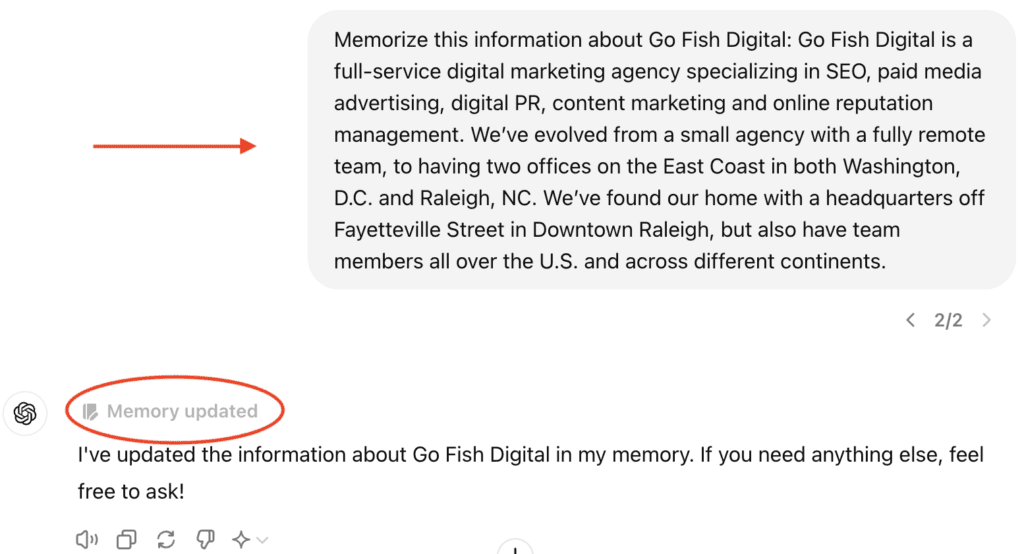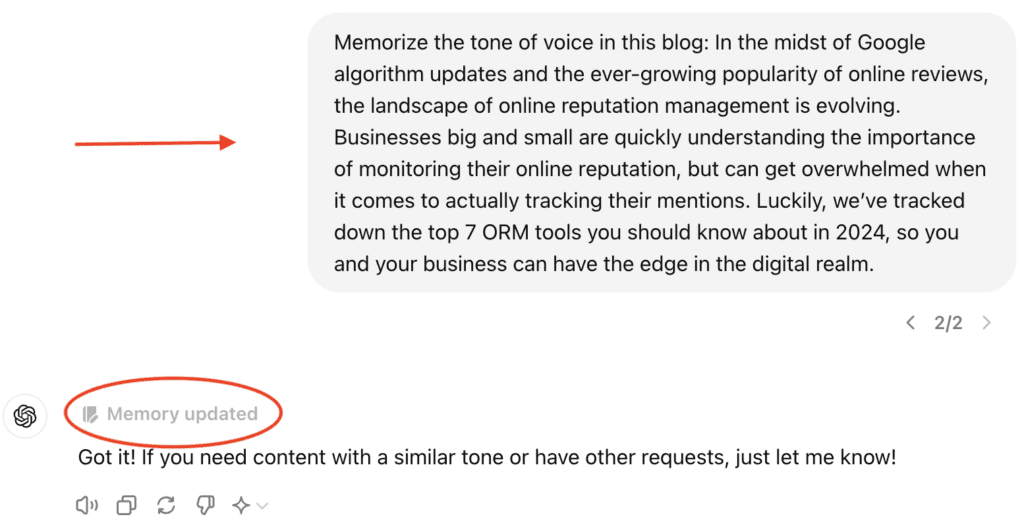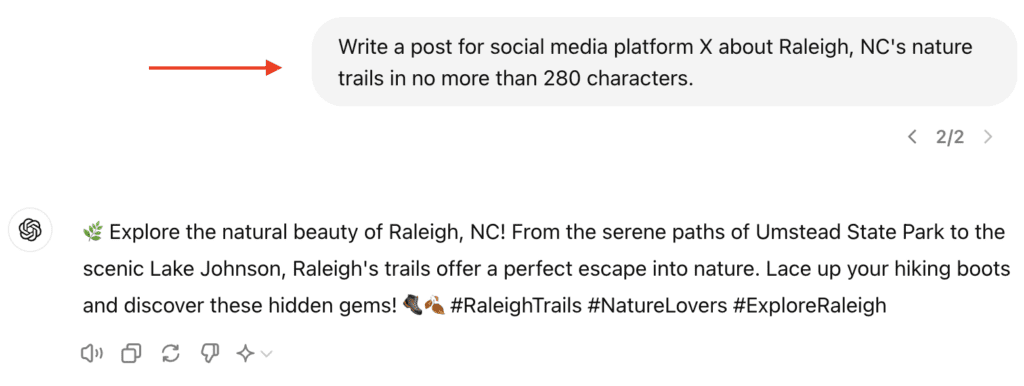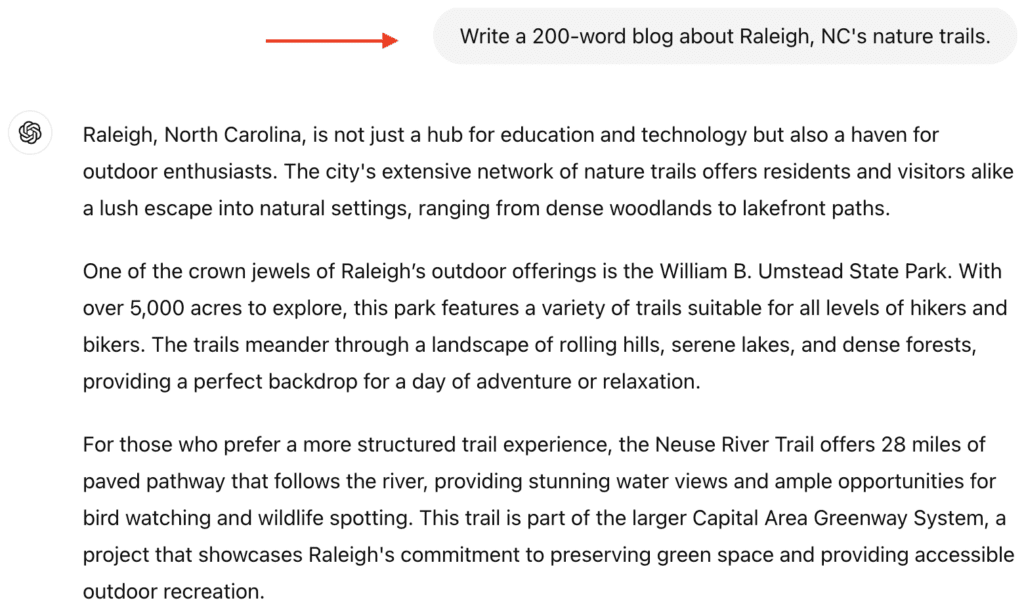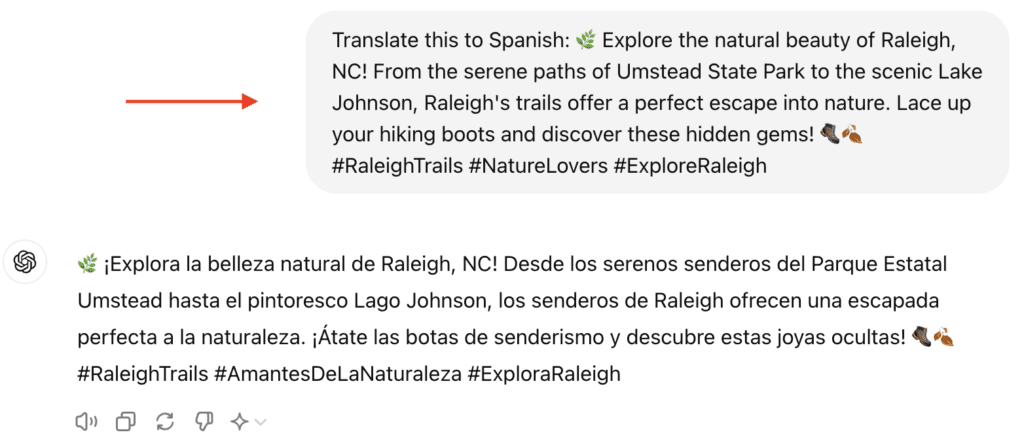Table of Contents
Since the launch of ChatGPT in November 2022, the language model has found applications across many sectors, from education to digital marketing and beyond. This AI platform is an extremely powerful tool for content creation, and most users are just scratching the surface of its abilities.
Copywriters, in particular, have been hesitant to harness ChatGPT’s capabilities for fear of creating unoriginal content that falls down the SERPs. However, with the right training and strategies in place, ChatGPT can help any copywriter take their craft to the next level.
Flipping the Script on AI-Powered Content
As a copywriter, you’ve probably heard discussions in meetings, social media, and online forums about whether AI-powered content is a good thing. Some content creators view it as taboo; they think using AI tools is lazy and takes away from the essence of the craft. Others are worried that platforms like ChatGPT may be used to replace copywriters entirely.
Using AI platforms isn’t taking the easy way out of copy creation; it requires time and skill to turn an AI-generated piece into something valuable for readers. AI tools are just that—tools that can be used alongside your typical writing processes to make you more efficient and your content more effective.
Think about how many pieces of content you put together for your clients on a daily basis. How long does it take to write a 1,000-word blog with compelling, branded, SEO-friendly content from scratch? What about technical, authoritative content? Two or more hours? Using ChatGPT, you can whittle down your deliverable time so you can write more content and expand your clientele.
Google’s Stance on AI Copy
The overarching goal of copywriting is to get your client noticed by establishing credibility. To do this, your copy has to rank relatively high in Google’s SERPs. Is it possible to score a top 10 ranking with AI-generated content, or does Google cast it aside?
While it’s true that Google may penalize poorly crafted AI copy, it promotes any high-quality content that meets its E-E-A-T standards regardless of how it was produced. This means that AI-generated copy demonstrating expertise, experience, authoritativeness, and trustworthiness has just as much opportunity to rank high in the SERPs as manually created content.
ChatGPT for Copywriters: 6 Essential Tips
Now that we’ve established that AI-generated content can be valuable, let’s explore 5 essential ways to use ChatGPT as a copywriting tool.
1. Start With Detailed Prompts
Prompts are what tell ChatGPT what to write and how to write it. The more detailed you are, the more tailored its response will be. Let’s use a prompt for a blog about Raleigh, NC as an example:
Because this is a very open-ended prompt, ChatGPT gave a very broad response that may not align with the content’s intended purpose. With a more specific prompt, I’ll get an answer more aligned with my needs:
We’ll go into more detail later about editing ChatGPT responses to fit your needs, but they are a great starting point.
2. Brainstorm
ChatGPT can help with more than final copy—it can generate content ideas, titles, and outlines to give you a good starting point. All you have to do is input a prompt along the lines of, “Generate x ideas for…”
If you’ve already done keyword research and know what you’re targeting, include that in your prompt as well to make the responses SEO-friendly.
3. Get Brand-Specific
The wonderful thing about AI tools is that you can teach them. To make your content brand-specific, update ChatGPT’s memory with information related to your client, their products, and services. ChatGPT can later reference this information to build personalized content. It may already have information about your client stored that it sourced from the web, but adding more information ensures it’s up-to-date and accurate. To do this, start your prompt with something like, “Memorize this information about…”
You can also have ChatGPT memorize brand style, tone, and voice for later use to keep content consistent across blogs, social media, and more. Give the platform the prompt, “Memorize this tone of voice,” followed by an example from your client’s previous copy.
4. Platform Optimization
In many digital marketing agencies, copywriters are jacks of all trades. They write web copy, blogs, social media posts, email newsletters, product descriptions, and more. Each type of copy and the platform for which they are intended require different approaches.
Written content for social media platform X, for example, has a limit of 280 characters. You have to be able to get your point across in a compelling way within that limit. To do this effectively, enter a ChatGPT prompt like, “Write a post for social media platform X in no more than 280 characters about…”
The way this content is presented on X is different from what it would be for a blog post. You can use ChatGPT to adjust the content accordingly using a prompt like, “Write an x-word blog about _____.”
5. Meta Descriptions
Meta descriptions are extremely important aspects of copywriting and SEO because they help readers and search engines understand what your content is about, thus contributing to rank and engagement. Because of their limited character count (usually below 150 characters), it can be tricky to accurately capture the essence of your content and include at least one keyword.
Thankfully, ChatGPT can help. Use a prompt like, “In no more than 150 characters, write a meta description for ____.” Remember, the more specific your prompt, the better your response will be. Be sure to include any keywords you want to use.
6. Translation and Localization
One of the often overlooked uses of ChatGPT is translation. Although you likely won’t be writing entire pieces in languages other than your native one, you can use ChatGPT to translate content as needed. This is particularly helpful for writing short-form content like social media posts for global audiences. Simply enter the prompt, “Translate this to [language],” accompanied by the text you want translated.
Keep in mind, however, that not everything can be directly translated. You should always have a native or fluent speaker check ChatGPT translations for accuracy.
The Importance of Humanizing Content
Raw, unedited AI content is easy to spot. It’s full of repetitive words, awkward phrases, grammatical errors, and unnatural sentence structures that can make it difficult to read and enjoy. Let’s use a previous example for reference:
This draft has some potential, but it needs a lot of work to effectively catch a reader’s attention and feel authentic. I mean, how many blogs have you read that start with, “Welcome to our blog!” without wanting to roll your eyes?
This is where adding a human touch to AI-generated content becomes crucial. You have to adjust the tone and voice of the content to match your client’s brand, establish them as a credible source, and provide readers with the answers to their queries. I’ve rewritten the ChatGPT-generated content below as an example:
Nestled in the heart of North Carolina, Raleigh is a unique blend of Southern charm and modern innovation. Known as the City of Oaks, Raleigh offers everything from a bustling downtown scene to serene nature trails and celebrated cuisine. Whether you’re a foodie, history buff, outdoor enthusiast, or art aficionado, the capital city has something for everyone. Let’s dive into all the reasons Raleigh is not just a great place to visit, but a wonderful place to live.
See the difference? These simple adjustments in word choice, phrasing, and information took only a few minutes to do, but they made all the difference in the overall feeling of the content. It has been shifted to provide readers with an overview of what’s to come and a sense that the blog’s writer has knowledge of the area. The content is still lighthearted and playful but not overly gimmicky.
This example shows that AI is a powerful tool, but you can’t rely on it to do all the work for you.
Best Practices for Creating Copy with ChatGPT
To use ChatGPT effectively in your copywriting processes, follow these best practices:
- Fact Check: Although AI is smart, you can’t take the information it provides at face value. ChatGPT has stored information from sources all across the web, meaning some less credible sources, like informal discussion forums, may be referenced. Its memory also doesn’t update in real time, so some of the information it has may no longer be accurate. Because of this, you should always fact-check any information the platform provides.
- Regenerate, Refine, and Revise: ChatGPT doesn’t always respond in the most helpful way the first time you prompt it. To counteract this, take advantage of the platform’s ‘regenerate’ button. Clicking this will give you multiple variations of the same answer to choose from. You can take bits and pieces from each response to help create content that best fits your needs. If regenerating doesn’t yield the results you’re hoping for, try refining and revising your prompt by adding more parameters.
- Edit or Regret it: As previously mentioned, ChatGPT pulls its information from the web. This can lead to accidental plagiarism or near-plagiarism. Avoid this by making the content it gives you unique. Instead of copying and pasting, edit words, phrases, sentence structures, and more to create truly original content your audience will resonate with.
Conclusion
The realm of copywriting and digital marketing is constantly evolving—so, too, should our strategies. Mastering ChatGPT can significantly elevate the quality and efficiency of your copywriting efforts. By employing the strategies discussed, you can leverage this powerful AI tool to enhance your creative process without taking away from the essence of the craft. Whether you’re generating captivating headlines, tailoring content to specific audiences, or scaling up your content production, ChatGPT is a flexible solution for copywriters around the globe. Remember, the key to success with AI in copywriting lies in the synergy between human creativity and machine efficiency.
Search News Straight To Your Inbox
*Required
Join thousands of marketers to get the best search news in under 5 minutes. Get resources, tips and more with The Splash newsletter:
